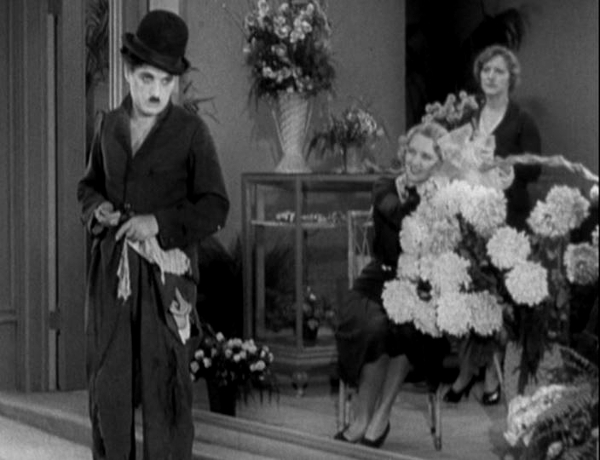By Sajeeb Sarker
8 Major Elements of a Story
Media School July 15, 2020

A few elements are required to tell a story. A still from `City Lights` (1931).
Elements of a story are usually those components that are necessary to build a comprehensible story. This article briefly explains 8 major elements of a story:
1. Setting: It is the time, place and environment in which the story takes place. In other words, 'setting' includes both the physical location and also the time (i.e. past, present, future), and also the social and cultural conditions in which the characters exist. In easy words, 'setting' is the WHEN and WHERE a story takes place and what is the ENVIRONMENT like.
So, we can say that: Setting = Time (When) + Place (Where) + Condition (Environment).
2. Character: Person(s), animal(s), or any object(s) personified to perform actions in order to tell a story. In easy words, the people (or particular things) that take part in the story.
So, we can say that: Character = People + Animal + Object.
Characters can be of 2 types:
a) Protagonist: the main character or the 'Hero' of the story, and
b) Antagonist: the character (or sometimes the 'force') that opposes the Protagonist (or creates problems - in other words)
3. Plot: The events that happen in a story creates the plot. In other words, the plot is the sequence of events that make up a story. A plot can typically be divided into: an introduction, rising action, a climax, the falling (of) action, and a resolution.
So, we can say that: Plot = Introduction + Rising Action + Climax + Falling Action + Resolution.
4. Conflict: It is the 'struggle' or the 'problem' the main character faces in the story that needs to be resolved. In every story, there must be a problem or challenge of any sort and the key character(s) or the protagonist of the story must face it and resolve it. It is believed that without conflict, the story will have no purpose or trajectory.
So, we can say that: Conflict = Problem/Obstacle.
Conflicts can be of 3 types:
a) Internal: Character (Person) vs Self
b) External:
I. Person vs Nature
II. Person vs Society
III. Person vs Supernatural
IV. Person vs Person
c) Relational
As there are different types of conflicts in literature, one story (or any literary work), simultaneously, can have more than one type of them in it.
5. Theme: This is the idea, belief, moral, lesson or insight a story offers. This is what the 'author' is trying to make the reader understand. In brief, 'theme' is the lesson or message of the story. Sometimes, the theme is the 'why' of a story.
So, we can say that: Theme = Central Idea + Lesson/Moral (Why).
6. Point-of-view: Every story is told using a 'point-of-view'. It means, 'who' is telling the story to the audience.
So, we can say that: Point-of-view = The Storyteller/Narrator.
Points-of-view can be:
a) First Person: the story is told mostly using 'I' or 'He' or 'She' or 'It'.
b) Second Person: the story is told using mainly 'you'.
c) Third Person: the story is typically told from the perspective of an 'all-knowing' narrator that is a person (the narrator) who knows everyone and everything of that particular story.
7. Tone: The 'tone' of a story is the overall emotional nature of the story. It creates similar emotional responses in the minds of the audience; e.g. if the tone of the story is sad, the audience will feel sad, and if the tone of the story is fun or happy, the audience will also be happy.
So, we can say that: Tone = The Nature/Emotion.
8. Style: This is how things are said in the story, and in total, how the story is told. This can be conveyed by different means including word choices, sentence structure, dialogue, metaphor, simile, hyperbole, and visualization.
So, we can say that: Style = The Way of Telling a Story.
So, these are major 8 elements of a story. Besides, comedy or humor, tragedy or loss, suspense, and crime are among many others that are also considered as story elements. But, they make up certain types of stories instead.


